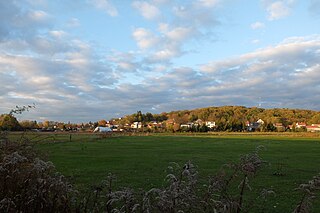|
Central Brandenburg Plateaux and Lowlands
52°18′30″N 12°57′0″E / 52.30833°N 12.95000°E The Central Brandenburg Plateaux and Lowlands (German: Mittelbrandenburgische Platten und Niederungen) form a natural region in the German state of Brandenburg and in parts of southwest Berlin and the east of Saxony-Anhalt. They are major unit group 81 in the system of natural regions of Germany and part of the East German Plateaux and Heathlands. The Brandenburg portion of the Central Brandenburg Plateaux and Lowlands is largely coincident with the natural region designated as the Central March (Mittlere Mark) in the structural atlas of the state of Brandenburg.[1] LocationThe Central Brandenburg Plateaux and Lowlands are part of the North German Plain. Neighbouring landscapes are the Luchland to the north, the East Brandenburg Heath and Lake District to the east, the Spreewald and the Lusatian Basin and Heathland to the southeast, the Fläming to the south and the Elbe Valley to the west. DescriptionAlmost all the landscape elements that originated during the Weichselian Glaciation in the state of Brandenburg are united within the Central Brandenburg Plateaux and Lowlands. These are dominated by ground moraine plateaux of varying extent alternating with wide lowlands. Adjacent to the Nauen and Teltow ground moraine plateaux in the north are the lowlands of Havel, Nuthe and Notte. They are followed by the regions of the Karow Plateau, the Lehnin Land and the heaths of Beelitz and Luckenwald. In the far south a broad urstromtal, the Baruth Valley. The highest points are found in the form of push moraines. The Wietkiekenberg reaches a height of 124.7 m, the Kleiner Ravensberg near Potsdam 114.2 m, the Götzer Berg 108.6 m. The entire natural region is drained by the Havel and its tributaries. Natural regionsThe Central Brandenburg Plateaux and Lowlands are subdivided as follows:
Literature
References
|
||||||||||||||||||||||
